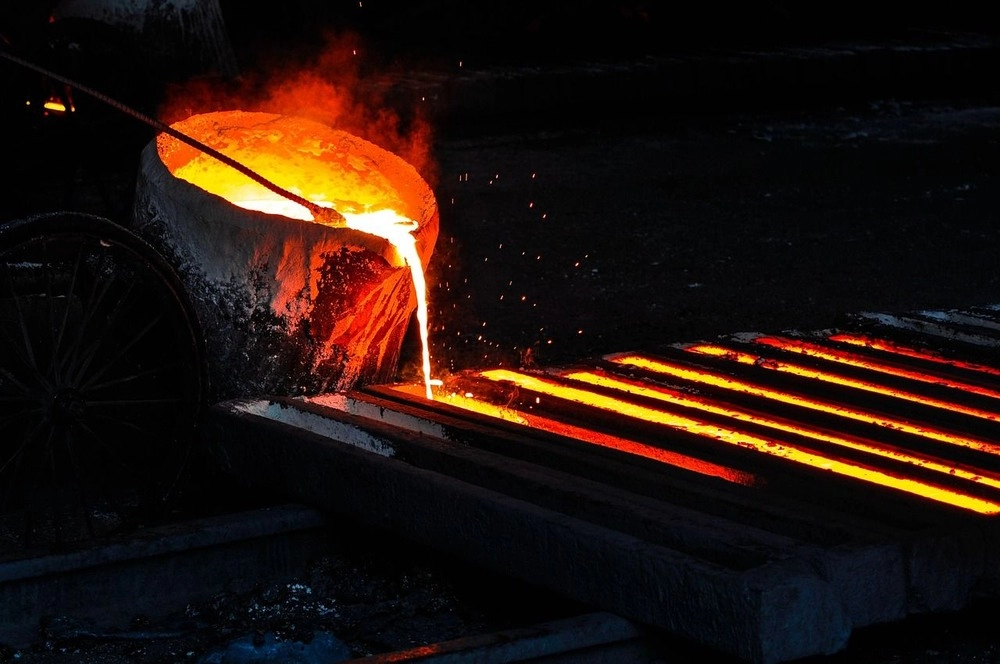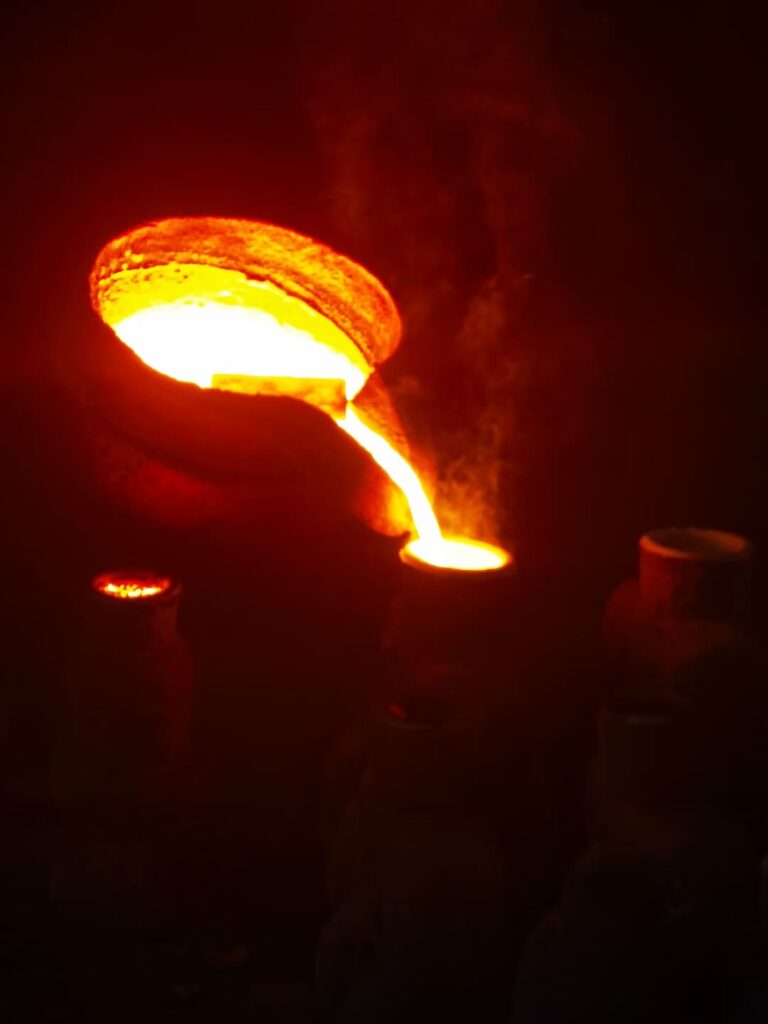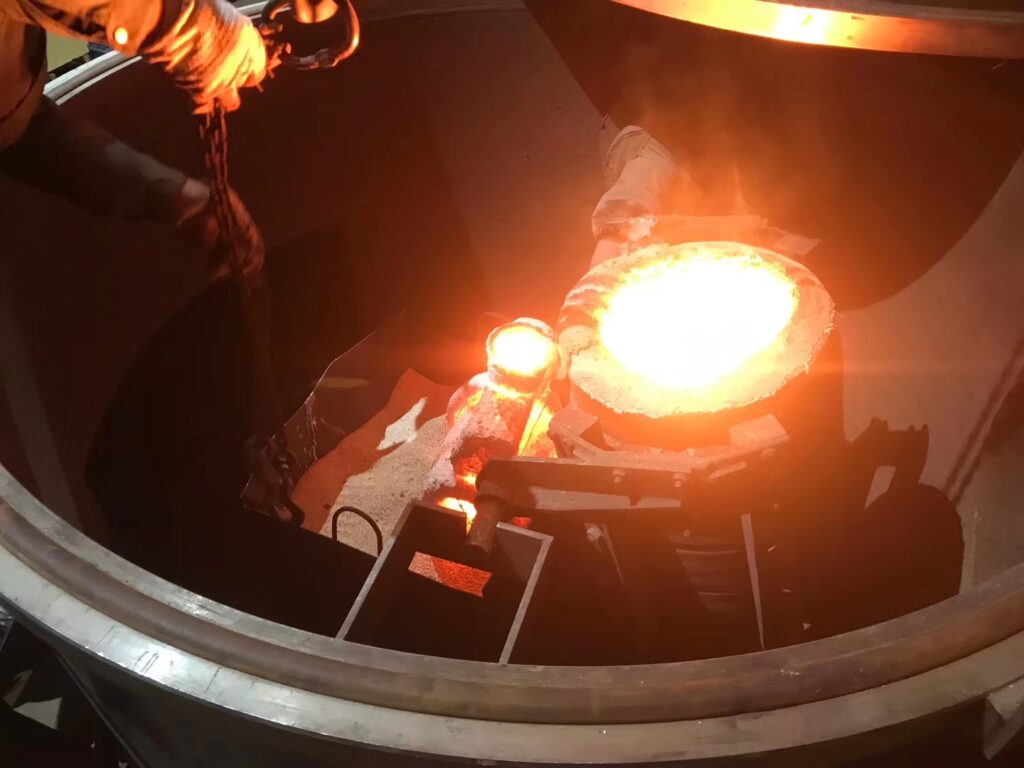Discover the precise iron melt temp and factors affecting it for metalworking casting and industrial applications explained clearly for pros and enthusiasts.
If you’re working with metals or curious about the raw fundamentals of iron melt temp, you’ve landed in the right place. Knowing that iron melts at 1538°C (2800°F) isn’t just trivia—it’s the cornerstone behind everything from crafting durable tools to powering massive steel plants. Whether you’re a metalworker, engineer, or DIY enthusiast, mastering this number unlocks precision and quality in your projects. Ready to get the facts straight and see how this one critical temperature shapes the future of manufacturing? Let’s dive in.
The Fundamentals What Exactly is Iron’s Melting Point
Understanding iron’s melting point is essential for anyone working with this versatile metal. Simply put, the melting point is the temperature at which iron changes from solid to liquid. For pure iron, this occurs at approximately 1538 degrees Celsius (2800 degrees Fahrenheit). This key measurement helps industries control processes like casting, forging, and alloy production.
However, the melting temperature can vary depending on the type of iron. For example, cast iron melts at a slightly lower range, around 1150 to 1300 degrees Celsius, due to its higher carbon content and impurities. In contrast, steel, an iron alloy, melts at temperatures generally between 1370 and 1510 degrees Celsius, influenced by the specific alloy composition.
These variations are rooted in atomic and structural differences. Pure iron has a crystalline structure that melts uniformly, while alloying elements like carbon disrupt this structure, lowering or raising the melting point. Understanding these fundamentals allows professionals to predict how iron behaves under heat, ensuring better control in manufacturing and industrial applications.
Factors That Influence Iron’s Melting Temperature

Iron’s melt temp isn’t fixed—it changes based on several key factors. Understanding these can help you control the melting process better.
Pressure and Environmental Effects
Higher pressure usually raises iron’s melting point. That’s why smelting iron deep underground or in specialized industrial furnaces can need hotter conditions than open-air melting. Also, the environment around the iron—like whether it’s exposed to air or vacuum—can affect how it melts, especially in precision processes.
Impurities and Alloying Elements
Pure iron melts at about 2,800 degrees Fahrenheit (1,538 degrees Celsius), but most iron you work with isn’t pure. Cast iron and steel contain other elements like carbon, manganese, or silicon. These impurities and alloying elements can lower or raise the melting temperature. For example, cast iron melts at a lower temp than pure iron due to its higher carbon content, which makes it easier to melt for casting.
Size and Form Considerations
The shape and size of the iron matter too. Smaller pieces or thin sheets heat and melt faster than big chunks because they absorb heat more quickly. In industrial settings, iron powders or fine particles can melt at slightly different temps compared to solid blocks because of surface area exposure.
By keeping these factors in mind, you can better manage the iron casting process or melting operations—whether you’re working in a small shop or a large industrial plant.
How to Melt Iron Step-by-Step for Safe Efficient Results

Melting iron safely and efficiently is all about knowing the right steps, having the right equipment, and understanding what to expect during the process.
Equipment Essentials
- Furnace: Use a high-quality furnace designed for metal melting, like an electric arc or induction furnace. They reach the iron melting point of around 2,800°F (1,538°C).
- Crucible: Choose a crucible made from materials that can handle extreme heat, such as graphite or clay-graphite.
- Protective Gear: Safety first. Wear heat-resistant gloves, a face shield, flame-resistant clothing, and sturdy boots.
- Tongs and Tools: Heavy-duty tongs and stirring rods help you handle molten iron safely.
The Melting Timeline
- Preheat the Furnace: Start by preheating the furnace to at least 1,000°F (538°C) to avoid thermal shock to the crucible.
- Add Iron and Fuel: Place iron pieces or scrap into the crucible. Make sure your fuel or power source supports a stable, high temperature.
- Monitoring: Use a pyrometer or temperature gauge to keep the temperature steady near iron’s melting point. Usually, it takes 30-60 minutes to fully melt iron depending on the furnace and load size.
- Stirring: Occasionally stir the molten iron gently to ensure even melting and temperature distribution.
Common Pitfalls and Troubleshooting
- Slow Melting: Check if the furnace temperature is too low or if the crucible isn’t preheated properly.
- Crucible Failure: Avoid sudden temperature changes to prevent cracking or warping of the crucible.
- Impurities: Watch out for slag or debris mixing with molten iron, which can affect the quality. Use proper flux if needed to clean impurities.
- Safety Risks: Never leave the furnace unattended and keep a clear workspace to reduce fire hazards.
Following this process ensures you melt iron safely and efficiently, ready for casting or other industrial applications. For more details on melting iron in furnace setups, consider checking resources on the iron casting process to perfect your workflow.
Industrial Applications Where Iron’s Melting Point Drives Innovation
Iron’s melting point plays a huge role in many industries across the U.S., especially in steel production and casting workflows. Knowing the exact iron melt temp helps manufacturers control the process better and produce consistent, high-quality steel. In steel mills, iron is melted around 2,800°F (about 1,538°C) to remove impurities and add alloying elements. This precision in melting is key to making durable products used in buildings, cars, and tools.
Beyond steel, iron’s melting temp is crucial in high-temperature engineering fields. For example, in making heavy machinery or parts that need to withstand extreme heat, knowing how iron behaves at different temperatures is essential to prevent failure. Industries like aerospace and automotive count on this knowledge to improve performance and safety.
When compared to other metals, iron has a relatively moderate melting point. Aluminum melts at about 1,221°F (660°C), much lower than iron, while tungsten melts far higher, at about 6,192°F (3,422°C). This middle-range melting point makes iron flexible for many uses but also demands specific furnace types and fuel.
Key industries using iron melt temp:
- Steel manufacturing and refining
- Foundries for iron casting processes
- Heavy machinery and automotive parts production
- High-temp engineering like turbines and engines
Understanding these industrial applications helps businesses in the U.S. pick the right melting methods, improve efficiency, and innovate new iron-based materials.
Safety Sustainability and Best Practices
When working with iron melt temps, safety is non-negotiable. High-heat operations come with risks like burns, fires, and toxic fumes. Here’s how to keep things safe and sustainable in your iron melting projects:
Risk Mitigation in High-Heat Operations
- Use proper protective gear: Heat-resistant gloves, face shields, and flame-proof clothing are must-haves.
- Maintain good ventilation: This prevents dangerous fumes from building up in your workspace.
- Follow furnace guidelines: Don’t overload or overheat the equipment to avoid accidents or damage.
- Regular equipment checks: Inspect your furnace and tools before every use to catch faults early.
- Clear work area: Keep flammable materials away and ensure proper fire extinguishing tools are available.
Eco-Friendly Melting Innovations
- Energy-efficient furnaces: Modern induction or electric furnaces use less fuel and produce fewer emissions than traditional coal or gas setups.
- Recycling scrap iron: Melting down scrap saves raw ore and reduces environmental impact.
- Cleaner carbon sources: Using biochar or cleaner fuels cuts down greenhouse gases compared to coal.
- Waste heat recovery: Some setups recycle lost heat to improve overall energy efficiency.
Pro Tips from VastPCC Experts
- Always monitor temperature closely using reliable thermocouples or pyrometers – overshooting iron melting point Celsius can waste energy or risk safety.
- Plan your melts in batches to reduce furnace downtime and save energy.
- Keep a log of melting conditions to optimize future runs.
- Stay updated on local safety regulations and eco-standards to keep your operation compliant.
- Use a layered approach to safety: personal gear, equipment checks, and workspace order all work together to avoid mishaps.
By combining these best practices with awareness of iron’s melting point, you’ll run safe, responsible, and efficient melts every time.

